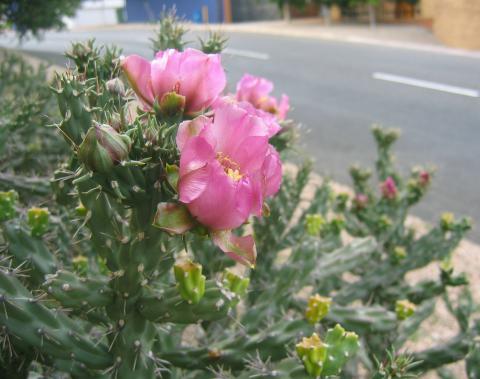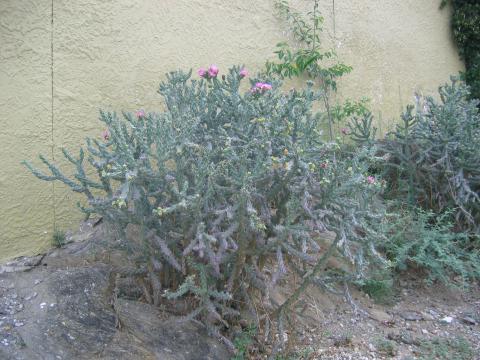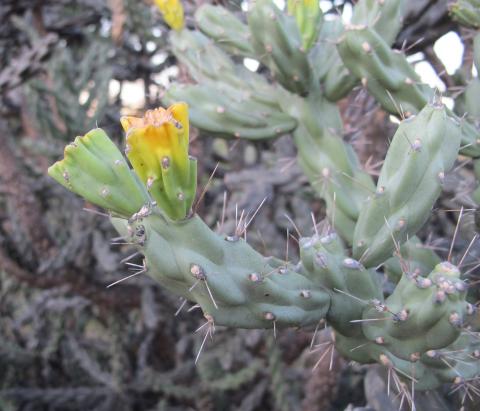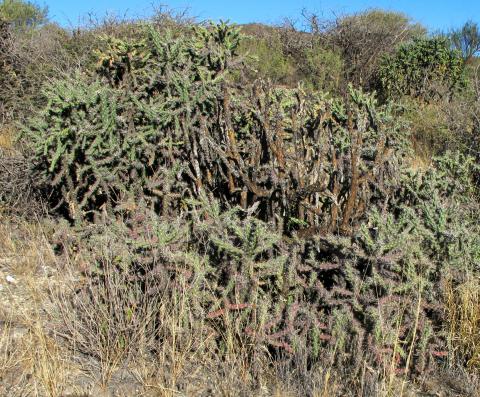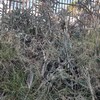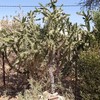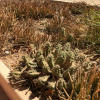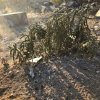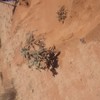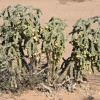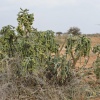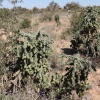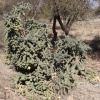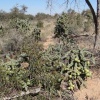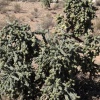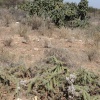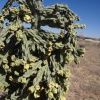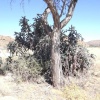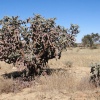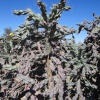Summary details for Cylindropuntia imbricata
Devil's rope cactus
Cylindropuntia imbricata
Common names: Devil's rope cactus, Cane cholla (English); Kabelturksvy (Afrikaans)
Origin: Mexico/USA
Description
A spiny, much-branched succulent shrub with short, erect, woody main stem, up to 3m high. Stems blue-green to green, 3-4 cm across, lumpy (tubercular), with long, oval lumps that give a woven, rope-like appearance. Old branches may hang downwards. Spines generally carried in groups of 5 to 10 (sometimes more), up to 30mm long, silver-grey to yellowish or pinkish, initially covered with loose, white papery sheaths. Leaves small, 1-2cm long, falling early. Flowers rose-like, pinky-red to magenta. Fruit yellowish, succulent, similar to stem but often spineless or with tiny spines, carried at branch tips.
Discussion
This is a highly invasive species that is difficult to eradicate once it gets big, and it forms dense stands that crowd out all other plants. It reproduces via seeds dispersed by birds and mammals that eat the fruit and also by means of stem joints that fall to the ground and take root. It is a declared category 1 weed in South Africa and is also a declared noxious weed in parts of Australia.
» See all records of Devil's rope cactus Cylindropuntia imbricata

